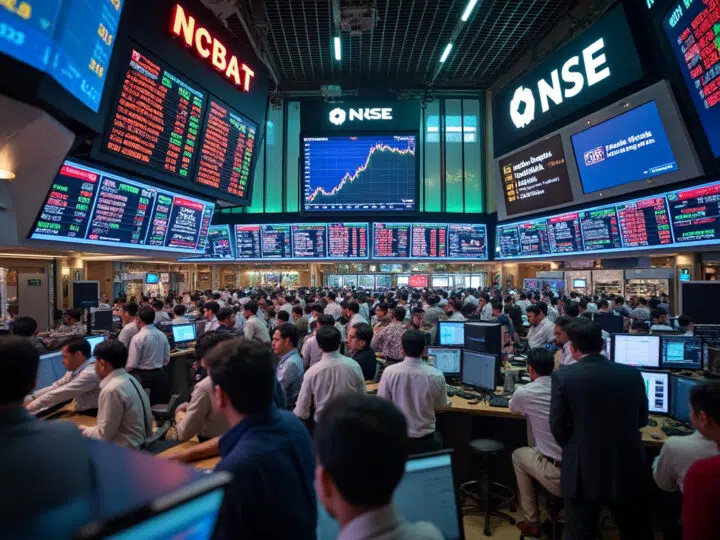
Contents
Introduction
The Olympics signify a celebration of athleticism, human endurance, skill, and determination. The world gets to see an event once every four years where athletes from across the globe struggle for the ultimate reward—an Olympic medal. For many countries, these medals do not stand for athletic excellence alone but for national pride. However, for India at the Olympics, the world’s second-most-populous country, the Olympics has often remained a case of unmet expectations. One is left reflecting critically: Why does a country with a population of more than a billion fail to leave any mark at the Olympic Games?
India’s 2024 Olympic Journey: High Hopes, Modest Returns
India at the Olympics is a story of potential mixed with challenges and heartbreaks. At the Paris 2024 Olympics, 117 athletes represented India across 16 sports, with 70 men and 47 women participating. They were competing in 69 events for 95 medals.
Despite our large numbers, we won only one silver medal and five bronze medals. Such results have sparked a debate and made people wonder about what is preventing Indian athletes from realizing their full potential. What are the bottlenecks that are preventing Indian sports from taking off?
Wrestling Setbacks for India At The Olympics: The Missed Opportunities of Phogat and Panghal
Wrestling in the Olympics is one of those sports that has given India more hope than other sporting events. But the 2024 Paris Games brought a setback for two of India’s top wrestlers, Vinesh Phogat and Antim Panghal. Wrestling for Indian fans remained the most talked about event for the wrong reasons.

Seasoned wrestler Vinesh Phogat has a plethora of international accolades to her credit and has been viewed as one of the country’s best hopes for a medal. In the months leading to the Olympics, she was in the news for her bout with the authorities by protesting at Jantar Mantar, accusing WFI chief Brij Bhushan Singh Sharan of sexual exploitation and intimidation.
However, her Olympic campaign ended tragically after she was disqualified from the contest before the final round. Thus, she lost a shot at the gold, besides her silver medal. Phogat’s problems lay outside the mat, and she struggled significantly with her weight management. This defeat badly hurt her, and she publicly announced her retirement from wrestling.
Another hopeful, Antim Panghal, has had her share of woes. The script was turned upside down as her Olympic journey was brought to an abrupt end, with a quick defeat in the qualification bout spanning 101 seconds. Adding insult to injury, Panghal was later sent back to India after she had given unauthorized access to her sister in the Games Village. This act of indiscipline shadowed her Olympic journey, and she awaits disciplinary proceedings on her return to India. These incidents reflect deeper problems within Indian sports in general, about preparation, mental toughness, and pressures of representing a nation on the world stage.
The Cricket Obsession: Opium of the Masses
It is not just a game but rather a religion in India. The game of Cricket holds a dominant position in Indian culture, from local street games to international tournaments. This passion for Cricket has led many Indian sports enthusiasts to fanatically support the success of their favourite cricket teams, often overshadowing other sports.
Cricket has received a lot of funding, attention, publicity, and public enthusiasm. As a result, it has become a stronghold for India and turned into a powerhouse of the sport. However, this has come at the expense of almost everything else. Most other sports, especially those with potential for Olympic success, deserve greater funding and appreciation.
As a result of this resource imbalance, athletes in other sports often require additional support to achieve success. This affects the athletes and hinders the development of other sports in India, impacting the country’s potential to excel and perform at the Olympic games.
The Infrastructure Challenge: Building for the Future
The poor performance of India at the Olympics can be attributed to India’s inadequate world-class sports infrastructure. While projects like Khelo India brought in a slow change, the distance that needs to be covered until India actually competes at the same level as other nations with strong Olympic traditions is enormous.
Building quality stadiums, training centres, and support facilities is time-consuming, expensive, and requires a colossal effort with huge financial outlays. Indeed, there have been improvements in the area of high-performance centres and specialized training academies, but these need to be hugely expanded if we are to remain competitive. Without proper infrastructure, even the best athletes can not perform at the highest levels on the world stage.
Talent vs. Opportunity: Breaking Down Barriers
In every corner of India, potential Olympic medalists are waiting to be discovered, nurtured and developed. These potential talents may be systematically identified in urban districts and remote villages. They need the opportunity to showcase their skills at the highest level so as to get a chance to represent India at the Olympics. However, they often face obstacles such as political interference, financial constraints, and selection biases.
Even a player as talented as Virat Kohli had difficulties in his early career; despite his obvious potential, his father would not pay for his inclusion in a junior squad. Imagine what it’s like for the countless others who don’t have the same resources or contacts if that’s the reality for someone like Kohli.
Changing the Cultural Mindset: Value for both Sports and Academics
The single major issue facing Indian sports is that people tend to consider sports as subservient to academics. Traditionally, Indian society has given more importance to education than athletics; individuals treat sports as a hobby and not a serious profession. This thinking has gone deep into people’s minds, and most parents and teachers discourage children from taking sports seriously and insist on devoting their time to their studies.
This attitude must undergo a cultural change if India is to succeed at any level in international sports. Like any other academic pursuit, sport should be a part and parcel of learning. Schools and parents should encourage children to nurture their athletic talents like their mental ones. Only when sports are placed on a par with academics can India boast of fully creating an atmosphere where future generations can grow into world-class athletes.
Claims at the Top and Expectations: Balance of Assurance
More often than not, a lot is expected of the athletes of India, especially during the Olympics. This can be overwhelming for emerging, inexperienced athletes. In India, sports are intrinsically linked with national pride, thus further augmenting the pressure. While some pressure is necessary to drive the athletes toward performing at their best, it may sometimes end in anxiety, burnout, and underperformance.
Equipping athletes with comprehensive psychological support would provide proper mental conditioning and counselling to alleviate pressure. Society has a role in ensuring that our athletes are physically well-prepared and mentally well-equipped for the challenge ahead.
The Role of Target Olympic Podium Scheme(TOPS): Growth and Challenges
In 2014, the Government of India launched the Target Olympic Podium Scheme, TOPS, with the aim of enabling elite athletes who have the potential to win a medal for India at the Olympics. It is conceptualized to provide financial support, world-class coaching, and training facilities abroad, all of which are non-negotiable if an athlete has to win an Olympic medal.

From Neeraj Chopra, gold in men’s javelin at the Tokyo 2020 Olympics and notably with his javelin throw at the Olympics 2024, where he continued to shine, to PV Sindhu, who captured a silver medal in badminton in Rio 2016 and Tokyo 2020, TOPS has been integral to the success of the athlete. Wrestlers like Bajrang Punia and Vinesh Phogat were subsequently included in TOPS, as were boxers like Lovlina Borgohain, who won a bronze in Tokyo.
Despite the successes of the TOPS, some of the questions it faces pertain to delays in fund disbursement and questions over the selection process. Sorting out these issues is essential if the scheme is to go on doing what it does best: churning out Olympic champions.
A Brighter Future for Indian Sports and Hope for India At The Olympics
India’s journey towards the Olympics has been filled with triumphs and trials. This is understandable, given the current state of affairs. Change, however, takes time. With sustained efforts and commitment towards improving every aspect of sports development, India can surely overcome the obstacles on the path to success at the Olympics.
The future looks promising. The growth of talent, infrastructure, and a cultural shift towards sports will position India as a leader in a better and more successful future. The dream of seeing India regularly on top of the Olympic podium can be realized with determination and continuous hard work.
India At The Olympics: Supporting India’s Olympic Dream
Whether by supporting improved sports policies or through simple encouragement, such as grassroots initiatives and support among young athletes in the community, every effort contributes greatly to achieving and fulfilling India’s dream at the Olympics. Therefore, let’s join forces and work towards a future where Indian athletes can shine on the international stage, bringing honour to the country and inspiring future generations.




This blog is not just informative but also engaging. It makes you think about what needs to change in India’s sports system.
Thank you 😊
This blog is not just informative but also engaging. It makes you think about what needs to change in India’s sports system.
Thank you 😊
Very informative blog, relatable to indian sports system.
Thank you 😊
India’s journey in the Olympic Games has been one of incredible highs and challenging lows, marked by moments of sheer triumph and instances of heartbreaking defeat. “India at the Olympics: Victories, Ordeals, and Hope” beautifully captures this rollercoaster of emotions, offering readers a comprehensive look at the nation’s Olympic saga.
Thank you 😊
Impressive! The message is clear, and it really makes you see the bigger picture
Thank you 😊
Digs deep into the reasons behind India’s underwhelming Olympic performance. Great work!
Thank you 😊
Great blog! The author makes a compelling case about the need to prioritize sports culture in India.
Thank you 😊
It’s disheartening to see that a nation as large and diverse as India struggles on the global stage. We need to invest more in grassroots sports infrastructure. By the way this article gives a detailed analysis on this issue, it’s neatly written in easier words
Thank you 😊
someone who’s been following India’s performance at the Olympics for years, I found this blog insightful and well-researched. The ordeals our athletes face are often overlooked, so it’s refreshing to see them acknowledged here. Great read on HillyReview!
Thank you 🙂
India’s journey at the Olympics has truly been a rollercoaster. From underdog victories to heartbreaking losses, the spirit of our athletes is inspiring.
Very well written, touched and emphasized all areas of concern sir .. Hope for best sir 🙏😊
🙏🏻